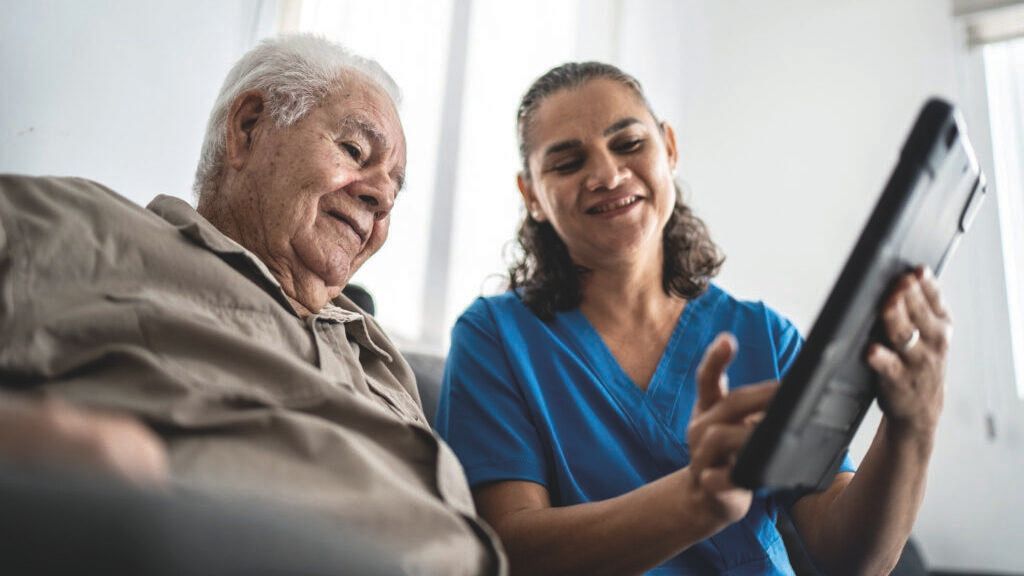Top 20 mid-sized care home groups ranked by social media following

Care PR consultancy Bridgehead Communications has unveiled the second report in the 2024 edition of its social media power list, ranking the UK’s leading mid-size care home groups and their individual homes based on social media following.
The PR consultancy first launched its now annual survey last year with the publication of three reports ranking the UK’s top 20 small, mid-size and large care home groups respectively by social media following.
Using carehome.co.uk’s list of the Top 20 Mid-size Care Groups of 2024, the report, titled: ‘Social Media Power List 2024 - Top 20 Mid-size Care Home Groups’, ranks each care home group and their respective care homes according to their social media following on the five most widely used platforms in the sector: Facebook, LinkedIn, Instagram, X (Twitter), and TikTok. The report was compiled using follower data recorded in July 2024.
As with last year’s report, the study also investigated the applications of social media in the adult social care sector. It explores the most effective social media platforms to use depending on the care group’s digital marketing objectives. It also highlights the importance of considering multiple factors in social media to boost engagement, and that striking a balance between group and individual home accounts is the most effective way of reaching a target digital audience.
Care groups and homes combined
In terms of the combined social media followings of each of the care groups and their individual homes, Carebase topped the charts, with 41,460 followers spread across Facebook, X (Twitter), LinkedIn and Instagram. Their X following accounted for half of this total and was the highest of all groups, in fact constituting nearly two-thirds of the combined total of the top 20 on the platform. Despite this, it appears that Carebase no longer uses their accounts on the platform.
Carebase’s social media following stood around 10,000 followers higher than the second-ranked care home group, Berkley Care.
As with last year’s report, Facebook accounted for the largest proportion of followers (56%, or 153,902) among the care groups and their homes. LinkedIn accounted for 20% (54,985), an eight-percentage-point increase compared to its proportion of followers among care homes in Bridgehead’s 2023 investigation into the Top 20 Mid-size Care Groups of 2022. X accounted for 13%, Instagram for 10%, and TikTok for less than 1%.
Compared to its peers, Berkley Care Group had the most significant Facebook following, which came from a combination of group and individual home accounts.
Commenting on the findings of the report, Berkley Care Group’s sales and marketing director, Kat Clayton, said that Facebook has proven a “great tool for highlighting the unique, luxury experience we offer to our residents”. The platform, she continued, also offers an opportunity to “share moments of joy and celebration” in homes, as well as “sharing the stories and celebrating the achievements of our fantastic staff team”.
On LinkedIn, it was Signature Senior Lifestyle which boasted the highest following (9,410), which came exclusively from its group account. On Instagram, Future Care Group dominated with 16,670 followers, providing more than half of the total of all the top twenty groups combined.
Individual care homes
The analysis also compared the social media following of the individual homes belonging to the top 20 groups.
Cumnor Hill House, which is part of the Berkley Care Group, topped charts for the second year in a row, with its total following (over 7,000) coming exclusively from Facebook. Following behind on 4,300 followers came Carewise Homes’ Dryclough Manor, whose following also came exclusively from Facebook.
Bridge House Care Home, part of the Carebase group, ranked in fourth place with 3,230 followers. It reflected a more diverse use of social media platforms compared with those in first, second and third – its following divided across three platforms: Facebook, X and Instagram.
Facebook accounted for approximately 80% of the combined following of all individual care home groups within the analysis.
Care groups
Lastly, the report ranked each care group by its own social media following, excluding those of individual homes.
On group-specific accounts, LinkedIn proved the most-used platform, with its tally (52,712) providing nearly half of the combined total of the groups (116,120). Facebook (22,223), X (29,951) and Instagram (11,230) also proved popular.
As a result of its significant X following, Carebase topped the group-specific account leaderboards with 17,150 followers. In close second, though, came Oakland Care, with its 15,450 followers coming from a more diverse range of platforms. Its LinkedIn following (9,365) proved most prominent, though both Instagram (4,136) and Facebook (1,300) followings provided a relatively significant part of their total.
Commenting on the analysis, William Walter, the report’s author and managing director of Bridgehead Communications, said: “It is a pleasure to launch the second report in this year’s series of social media power list insights. Launched last year, the power lists proved incredibly popular across the sector, offering marketing teams insights with which to inform their digital marketing strategy.
“These investigations offer fascinating insight into how care groups are using these platforms to grow their industry and public presence, with knock-on effects on occupancy rates, reputation, and staff recruitment and retention.
“Our report also considers the advantages and drawbacks of group-specific social media accounts versus accounts for individual homes and explores how your group can strike the right balance.
“Given the larger presence of mid-sized groups on social media versus the smaller groups assessed in our previous report, the findings also offer an interesting demonstration of how social media use in social care is changing over time. The growing prominence of LinkedIn, for example, is an intriguing development. It will be interesting to see how these figures have changed when we turn to our third and final report, which covers the Top 20 Large Care Home Groups.
“We’d encourage anyone to get in touch if they’d like to discuss the findings in more detail. We’d also be happy to offer a complementary virtual or in-person teach-in to discuss how care groups can optimise their social media outreach.”




